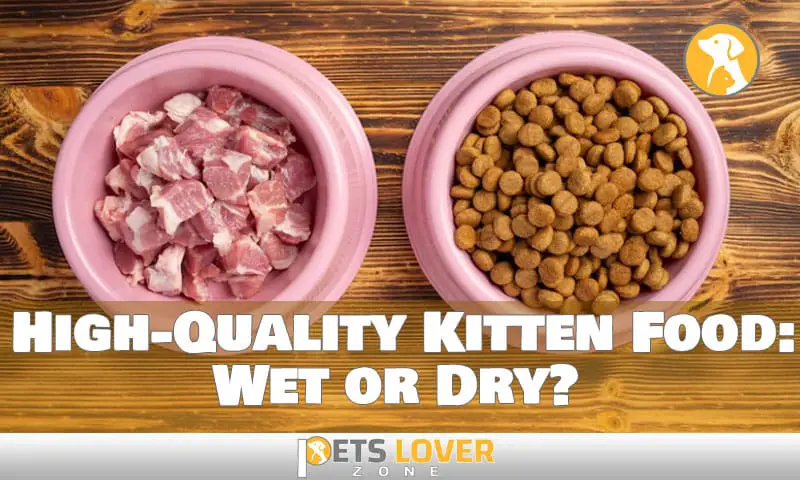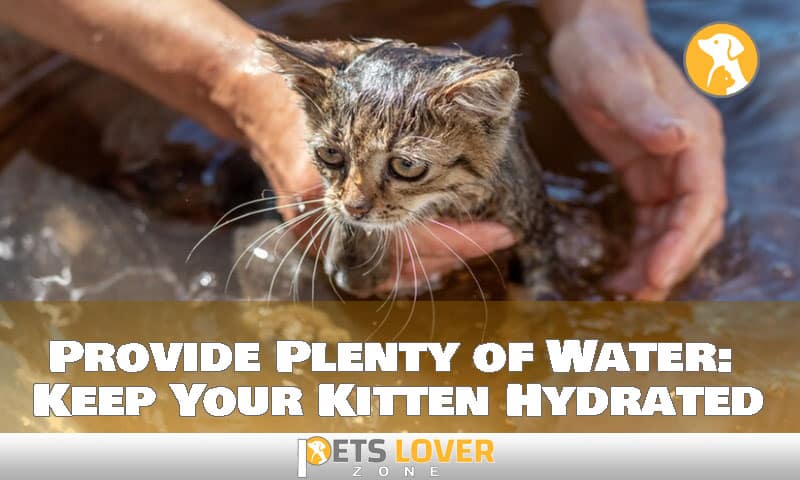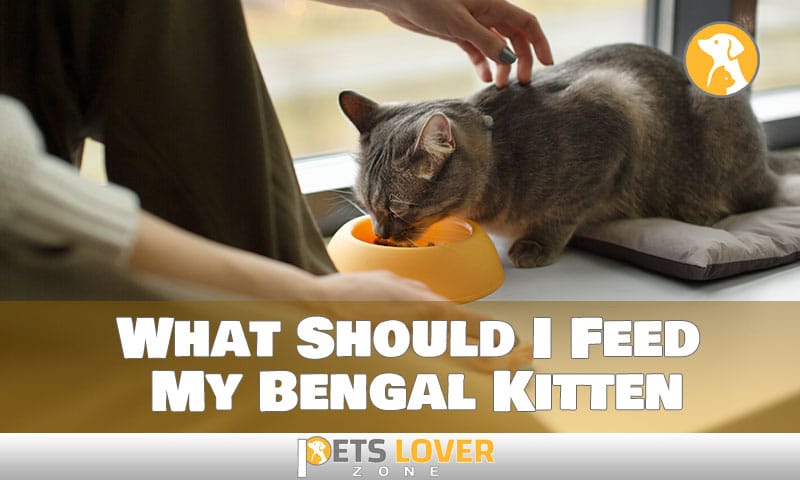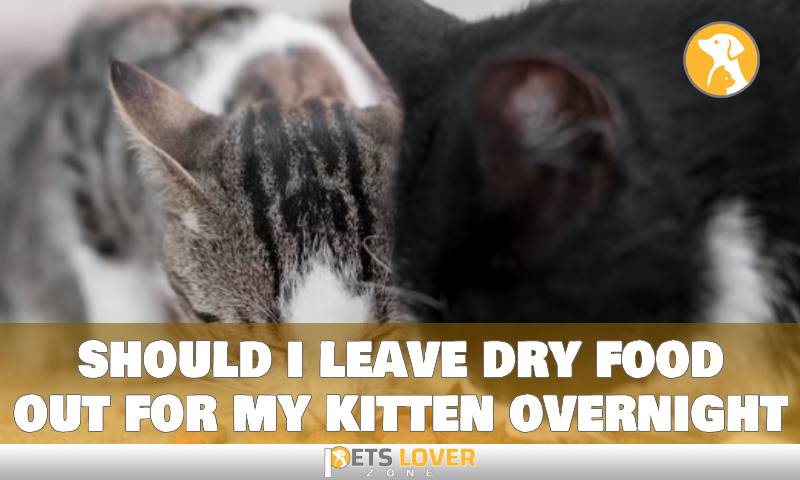Bengal kittens are adorable little furballs that quickly become beloved members of the family. But how do you know what to feed them?
Bengal kittens need a balanced diet with lots of protein, healthy fats, vitamins, minerals, and fiber. It’s also important to read labels and avoid foods with unnecessary additives or preservatives. When creating a meal plan for your Bengal kitten, it’s important to remember that variety is the key to a healthy diet.
In this article, we will cover what you need to know about your Bengal kitten’s dietary needs and provide tips on how to create a nutritious and diverse meal plan. We will also offer advice on what foods you should avoid feeding your Bengal kitten. Finally, we will take a look at the benefits of homemade meals versus store-bought meals for Bengal kittens.
High-Quality Kitten Food: Wet or Dry?

It’s important that you feed your Bengal kitten a high-quality kitten food formulated specifically for kittens. Kittens have different nutritional needs than adult cats, so it’s essential to feed them foods designed for their particular stage of life. The best way to ensure your Bengal is getting the right nutrition is to choose a food that’s been developed specifically for kittens.
Both wet and dry forms of high-quality kitten food are available. Given its higher moisture content and potential appeal to pickier eaters, wet food must be kept cool both before and after serving because once opened, it quickly goes bad. Dry foods are more calorie-dense and require less refrigeration, making them ideal for convenience, but because cats get most of their water from their food, you should consider supplementing with wet food or additional sources of hydration if feeding only dry food.
Additionally, remember to provide good amounts of high-quality kitten food to any nursing mother cat in your home. She will need extra energy and nutrition while nursing her kittens.
By carefully considering what type of high-quality kitten food you should feed your Bengal kitten, you can help ensure they get the best nutrition possible.
Protein Is Key: Look for Fish, Poultry, or Meat as the First Ingredient
When it comes to what to feed your Bengal kitten, quality proteins and fats should be sought for their muscle growth and to support their immune/nervous system development. To ensure your tiny pal is getting the necessary proteins, specific sources should be sought, such as chicken, turkey, fish, liver, beef, and lamb.
When selecting a food for your Bengal kitten, keep an eye out for protein as the first ingredient listed. Carbs should be lower on the list since they are not very beneficial to felines and can build up in the intestines.
Two or three named animal proteins, such as salmon meal, chicken meal, and turkey meal, are typically included in the first five ingredients of higher-quality brands. Check for grain-free options if possible, because cats cannot digest grains as easily as other animals can.
Given this information, it is best to look for higher-quality foods with higher levels of proteins from animal sources.
Go Grain-Free: Fillers Can Upset a Bengal Kitten’s Tummy
When it comes to feeding your Bengal kitten, it’s important to remember that grain-free diets don’t have to be unhealthy. In fact, they can be beneficial if they are also free of vegetables and carbohydrates. Fillers like grains, corn, and soy can be harmful to a kitten’s health in the long run. A diet high in these fillers, combined with the requirement for more food intake, can easily upset a kitten’s stomach.
Therefore, it is important to find cat food with limited filler ingredients, such as the ones listed above. This doesn’t mean that all grains are bad for cats; however, you should use caution when selecting foods for your Bengal kitten, as some brands contain excessive amounts of grains or wheat products in their ingredient lists. These filters can lead to many health problems, so it’s best to stick with foods that solely contain proteins and limited carbohydrates.
Provide Plenty of Water: Keep Your Kitten Hydrated

Making sure your Bengal kitten is well-hydrated should be a top priority. Cats need to consume an average of 8 to 27 tablespoons of water per day, which is about 4 ounces of water per five pounds of lean body weight, or roughly one ounce per pound of body weight each day. To help ensure your kitten has access to plenty of fresh, clean water at all times, use multiple water sources, such as separate food and water dishes as well as a fountain-style option.
Keeping your home environment humid is also important for hydration. You can achieve this easily by including environmental humidifiers in your home, which will help keep your Bengal cat healthy and shiny. Additionally, you may want to add wet food to their diet, whether it’s canned or raw, as it will increase their daily intake of water and nutrients. Adding canned tuna with its natural juices can also be a good way for cats to get the additional moisture they need.
Feed Your Bengal Kitten Several Small Meals a Day
When it comes to feeding your Bengal kitten, the best plan of action is to feed them two or three small meals throughout the day. Kittens are much smaller than adult cats and require double the food proportionally, so they need to eat more often.
Since Bengals are energetic cats with high activity levels, they need more fuel to keep up their activity level. The small meals help keep their energy levels up while also not overloading their tummies with too much food at once.
In terms of what type of food is best for Bengal kittens, look for a portion of high-quality food with animal protein with a Biological Value (BV) of over 90%. Animal proteins are essential for kittens because they help support healthy development, which includes muscles, bones, fur, and teeth. And don’t forget about other essential nutrients such as vitamins, minerals, fatty acids, and probiotics that should be included in their diet.
Treat Your Bengal Kitten With High-Value Rewards for Training
Bengal kittens are intelligent and highly active, so it is important to provide them with opportunities for learning and mental stimulation throughout the day. To further this aim, provide your cat with a reward system for positive behaviors. Rewards can be food, toys, or even affection and verbal praise.
Clicker Training
Consider investing in a clicker if you are serious about training your Bengal kitten. Clicker training is an effective way to train your pet to behave in certain ways, but it also helps to limit the number of extra calories ingested – which can be beneficial for cats prone to becoming overweight. While treats should still be given as rewards during the training process, they can be limited with clicker training.
Positive Reinforcement
Positive reinforcement is a powerful tool when it comes to training Bengals, as they respond well to treats and praise when they do something right. When using rewards as a form of motivation, keep in mind that cats are motivated by different things than dogs – so it may take some experimentation with cue words and rewards on your part before you find the perfect reward system that works for your Bengal kitten.
Feeding a Raw Diet to Your Bengal Kitten
When it comes to feeding your Bengal kitten, the best option is to give them a diet that’s 70% lean raw meat. Cats have a short and acidic digestive tract, which makes it easier for them to digest raw food than cooked food. While every kitten’s dietary needs will vary depending on their Depending on age, activity level, and overall health, a fully grown Bengal can eat up to ½ kilos of raw food per day.
When deciding what type of raw food to give your Bengal, make sure you only choose high-quality red meats that are free from preservatives and hormones. Note that you should never feed them cooked bones, as this can be dangerous for their digestive system. In addition to lean cuts of meat, you can also add in some fresh vegetables and small amounts of fruit as an occasional treat.
Raw feeding is an excellent way to ensure your Bengal kitten gets the nutrition it needs while supporting its optimal health and well-being. Not only is it healthier than processed cat food, but it is also more enjoyable for them!
Treats and Supplements for Bengal Cats
When it comes to treats and supplements for your Bengal kitten, there are a few things to consider. Quail eggs can be given as a supplement once or twice a week, and are packed with protein, vitamins, and minerals. Raw meat is also an excellent supplement to add to their diet, as it is rich in essential amino acids and fatty acids. OcuLove is an all-natural ocular remedy that helps maintain proper eye health. These supplements should provide balance to a nutritionally-complete diet of premium dry or wet cat food specifically formulated for kittens. Treats should only make up 5% of a Bengal kitten’s total daily intake, as too much can lead to digestive issues and weight gain.
Avoid Fillers and by-Products in Bengal Kitten Food
When it comes to feeding your Bengal kitten, two of the most important things to look for in its diet are the absence of fillers and by-products. Fillers are artificial ingredients and food additives that can be harmful to your pet’s health, while by-products are safe for Bengals as long as they come from an animal source.
Animal proteins should be the foundation of a Bengal cat’s diet, and you should look for food that is rich in proteins like fish, poultry, beef, or lamb. These proteins should make up around 40% – 50% of your pet’s diet. Similarly, you should avoid foods with artificial ingredients or fillers, as they may cause digestive issues in your Bengal kitten. Additionally, food labeled “by-product meal” or “meat by-products” can be safely used in a Bengal cat’s diet. These products contain essential fatty acids, which provide optimal nutrition for your pet.
Homemade Food for Bengal Kittens: Recipes and Guidelines
Experts advise a raw food diet as the healthiest option, so if you’re considering making your own Bengal kitten food, you should be aware of this. This diet should consist of 70% lean raw meat, such as chicken or turkey, cut into small pieces, and 30% fruits, veggies, and supplements. It is important to note that the meat should be pre-frozen to avoid parasitic infections, and safe storage practices should be followed afterward.
If the idea of preparing homemade meals for your Bengal kitten seems daunting or complex, you can always opt for a commercially balanced raw diet instead. Many brands offer a wide selection of flavors, so you can find something your kitten will love!
Conclusion
In conclusion, as a Bengal kitten owner, it’s important to set your cat up for a healthy life by choosing the right food for their age, activity level, and dietary preferences. There’s a wide variety of foods available, so make sure to do your research, speak to your vet, and figure out what’s right for your feline friend.
The decision on what to feed your Bengal kitten is one of the most important ones you will make. Make sure to educate yourself and create a balanced diet that meets your dietary requirements. It’s a small investment of time and effort that will benefit your Bengal kitten’s well-being and health in the long term.





